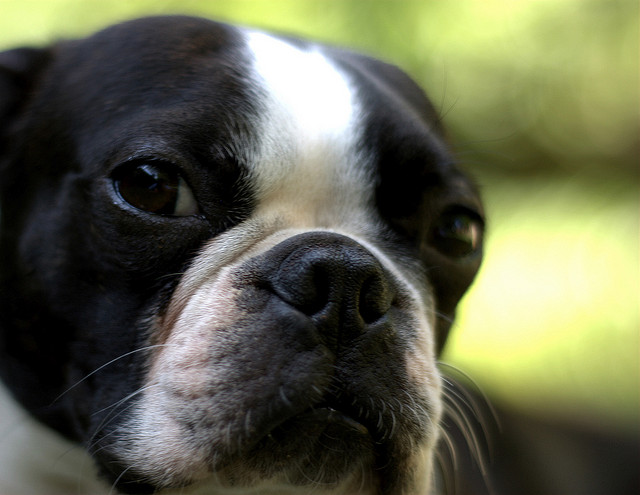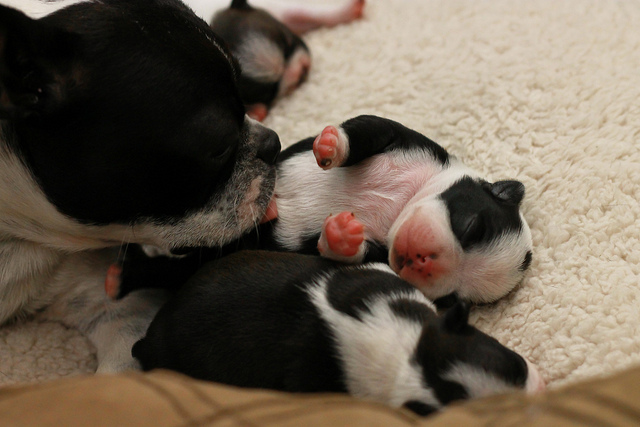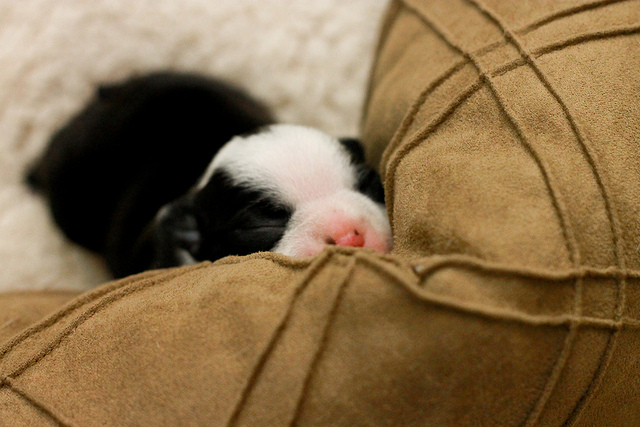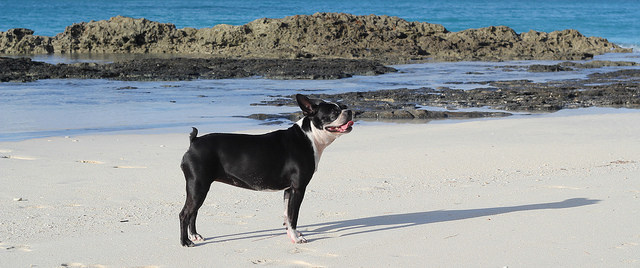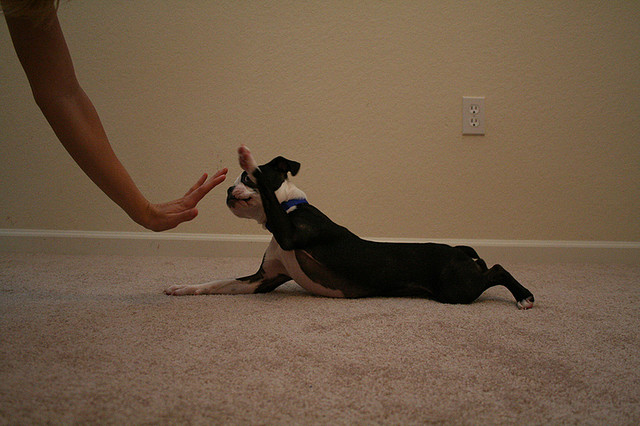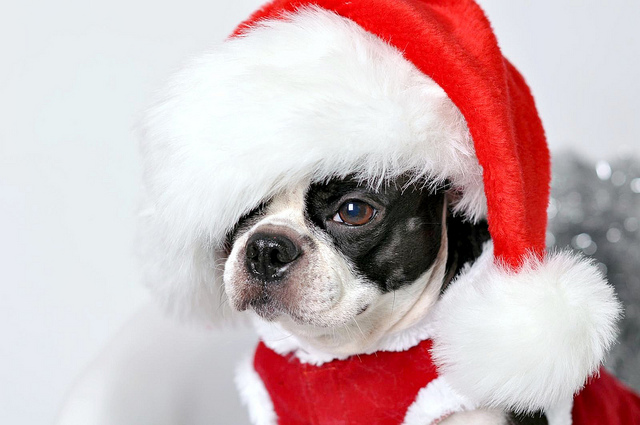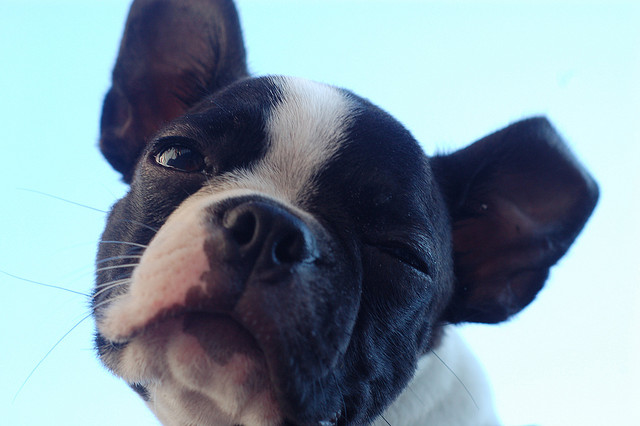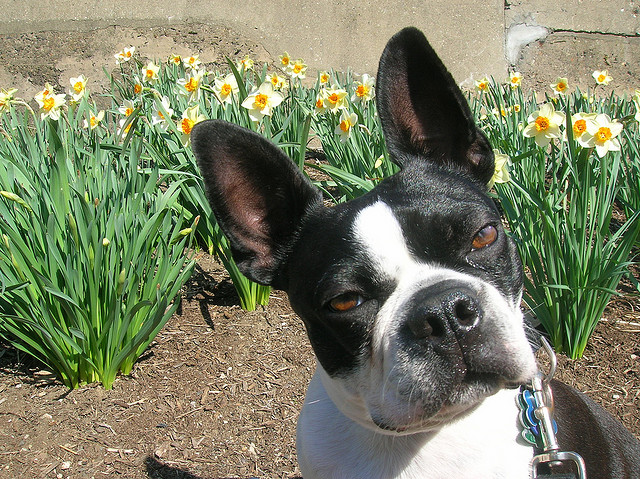The Boston Terrier is a popular breed often referred to as the Boston Bull, the Boston, the Boston Bull Terrier, and the American Gentleman. This true American breed was first created by breeding a white English Terrier and an English Bulldog. After the initial cross-breeding, there was significant subsequent inbreeding to come up with the standardized breed we have today. Since its creation, the Boston Terrier breed has become one of the most popular breeds within the U.S. and was officially designated as Massachusetts’ State Dog.
These lively, friendly, intelligent, and compact dogs feature flashy white markings on dark coats. They love interacting with other pets and people, and if they are properly monitored and well socialized, they do very well with children as well. Boston Terriers are classified by three different weight categories: dogs less than 15 pounds, dogs between 15-20 pounds, and dogs between 20-25 pounds.
Boston Terrier Origin
The Boston Terrier breed traces all the way back to Robert C. Hooper in the 1800s. This Boston native had an imported dog that was named “Hooper’s Judge.” This was a dark brindle dog that featured white markings, and he’s considered the direct ancestor of all of today’s Boston Terriers. “Hooper’s Judge” was a cross between an English Bulldog and a white English Terrier, although he looked more like the Bulldog. Judge was later bred to white bitch, and it was their offspring that would be the foundation of the entire Boston Terrier breed.
Some experts think that French Bulldog blood may have been added to the breed to reduce the breed’s size. Fans of the new breed organized the American Bull Terrier Club in 1889, and they exhibited their dogs as “Bull Terriers” or “round Heads.” However, Bulldog and Bull Terrier lovers opposed the use of the overlapping, confusing breed names.
Later, in 1891, the Boston Terrier Club of American was formed by lovers of the breed and the breed was renamed the Boston Terrier after the breed’s city of origin. It was still several years before fanciers of the breed would be able to convince the AKC that this breed was a pure breed. In 1893, Boston Terriers were finally added to the AKC Stud Book and in the same year, the breed was given membership with the AKC as well.
It took some selective inbreeding to achieve the unique look that the Boston Terrier has today. However, these dogs are instantly recognizable today, featuring a flat face, large eyes, short muzzle, and the beautiful snow-white markings set against a dark coat.
Boston Terriers reached Europe by the 1920s and it was dubbed the most popular purebred within North America in the 1950s. Today, the breed continues to be a popular choice within the United States.
The Appearance of Boston Terriers
The Boston Terrier is a small, compact dog that has a broad heat, a tuxedo patterned coat, and protruding eyes. These dogs have a short muzzle and a square face that looks a bit like a Boxer. While they have bulldog lines in their roots, their square proportions make them take after terriers. They have erect, small ears, and low set, tapered, short tails.
Boston Terriers have a smooth, fine coat that stays flat against their body. The coat can come in three different colors, including brindle, black, and seal, which looks black but is really red. All dogs of this breed have white chests, face blazes, and muzzles, which gives them the tuxedo appearance.
These small dogs generally stand at 12-15 inches at their shoulder. They can weigh between 10 and 25 pounds, and there are three size classifications set up by the AKC. Dogs that weight over 25 pounds or less than 10 pounds are considered to be undesirable according to the breed standards.
Boston Terrier Temperament
The personality of a Boston Terrier can vary from dog to dog. Some are subdued and mellow, others are funny, and some are sassy and rowdy. However, all Boston Terriers love activity, attention, and being around people. Since they like to focus their attention on one person, they make great companion dogs for elderly individuals. These dogs are often able to know when their owner is lonely, happy, angry, or sad, and they will adjust their behavior in response.
Although Boston Terriers may try to manipulate their owner with their charming looks, they are still highly trainable. Using lots of treats and positive reinforcement works well for this breed. These dogs bark a lot as well, particularly at other dogs. It’s important to begin training these dogs early with a stop barking command.
While the Boston Terrier is small, they do love to run and play. However, they don’t need a lot of space. They are perfect for a small apartment, although they’ll still need playtime and walks daily.
Grooming Your Boston Terrier
Boston Terriers require very little grooming. Their smooth, short coat only sheds very lightly throughout the year, which means you’ll only need to brush them weekly to ensure those stray, dead hairs are kept in check. Bathing only needs to be done whenever the dogs become dirty or smelly. Many owners choose to use dry shampoo on the dogs, keeping the coat healthy and clean while minimizing the need to give the dogs a bath. Since the protruding eyes can easily become infected or irritated, it is important to clean the face daily.
Weekly teeth cleaning and ear cleaning is important as well. If the Boston Terrier doesn’t wear down his nails naturally, monthly clippings will be needed.
Working Roles of Boston Terriers
Boston Terriers were not bred to be working dogs. They are very small and are bred to be companions.
Boston Terrier Health
The average life span of the Boston Terrier ranges between 13 and 15 years. Since the breed was specifically bred to create smaller dogs that still have large heads, it’s very common for Boston bitches to have a tough time delivering puppies naturally. In many cases, Caesarean sections are required to deliver the puppies. Some of the other potential health concerns for Boston Terriers include:
- Pattern Baldness
- Congenital elbow luxation
- Brachycephalic upper airway syndrome (due to exaggerated facial characteristics of the breed)
- Hydrocephalus
- Atopy
- Congenital deafness
- Ocular disorders
- Allergies
- Patellar luxation
- Vascular ring anomaly
- Melanoma
- Hemivertebrae
- Ulcerative keratitis
- Hyperadrenocorticism
- Generalized demodicosis
- Pyloric stenosis
- Hypoplastic trachea
- Tail-fold intertrigo

